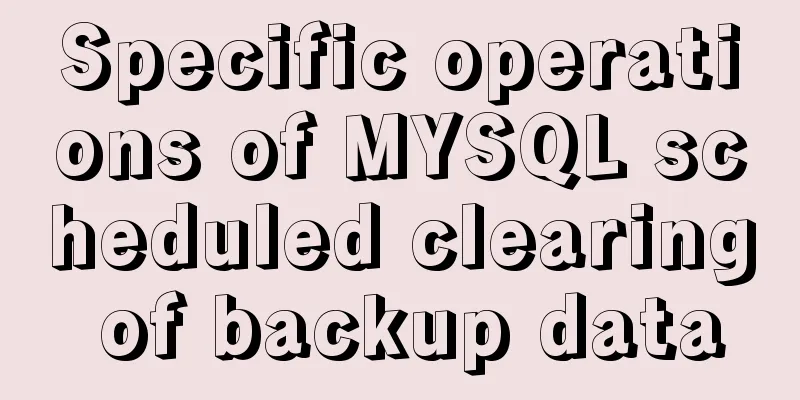How to Clear Disk Space on CentOS 6 or CentOS 7

|
Following are the quick commands to clear disk space on your CentOS 6 or CentOS 7 server. First you need to install the yum-utils package: yum -y install yum-utils 1. Prune log files
find /var -name "*.log" ( ( -size +50M -mtime +7 ) -o -mtime +30 ) -exec truncate {} --size 0 ;
This will truncate all *.log files on the /var volume that are older than 7 days and larger than 50M or older than 30 days. 2. Clean up the YUM cache Cleaning the yum cache is simple: yum clean all Please note that the above command will not remove all the files associated with yum that have been installed. You may want to free up space occupied by orphaned data in disabled or deleted repositories: rm -rf /var/cache/yum Also, when you accidentally yum through a normal user (forget sudo), yum will create a user cache. So we remove that as well: rm -rf /var/tmp/yum-* 3. Delete orphan packages Check for existing orphan packages package-cleanup --quiet --leaves --exclude-bin Confirm deletion of orphaned packages Now, if you are happy with the suggestions given by the previous command, run: package-cleanup --quiet --leaves --exclude-bin | xargs yum remove -y 4. Delete WP CLI cached WordPress downloads Every time you set up a new WordPress site, WP CLI saves a WordPress archive. You can delete these caches with the following command: rm -rf /root/.wp-cli/cache/* rm -rf /home/*/.wp-cli/cache/* 5. Delete the old kernel Before removing the old kernel, you may want to reboot first so that you can boot from the latest kernel. Because you can't remove old kernels from the current boot system 🙂 The following command will keep only the 2 most recent kernels: package-cleanup --oldkernels --count=2 Note that with some VPS providers (such as Linode), the server defaults to using a kernel built by the provider, rather than the server's own kernel. Therefore, it makes no sense to keep more than 1 old kernel on your system. so: package-cleanup --oldkernels --count=1 6. Delete Composer Cache rm -rf /root/.composer/cache rm -rf /home/*/.composer/cache 7. Delete core dumps If you have some serious PHP glitch that causes it to segfault and enable core dumps, then chances are - you have a lot of them. find -regex ".*/core\.[0-9]+$" -delete 8. Delete the error_log file (cPanel) If you use a nasty cPanel, you will surely have dozens of error_log files scattered throughout your web directory. If you can install Citrus Stack, that's much better. A temporary solution is to delete all of these files: find /home/*/public_html/ -name error_log -delete 9. Delete Node.js cache rm -rf /root/.npm /home/*/.npm /root/.node-gyp /home/*/.node-gyp /tmp/npm-* The above is the full content of this article. I hope it will be helpful for everyone’s study. I also hope that everyone will support 123WORDPRESS.COM. You may also be interested in:
|
<<: JavaScript implements simple date effects
>>: MySQL daily statistics report fills in 0 if there is no data on that day
Recommend
How to configure MySQL scheduled tasks (EVENT events) in detail
Table of contents 1. What is an event? 2. Enable ...
Detailed steps for configuring virtual hosts in nginx
Virtual hosts use special software and hardware t...
js returns to the previous page and refreshes the code
1. Javascript returns to the previous page history...
CSS3 changes the browser scroll bar style
Note: This method is only applicable to webkit-ba...
An article to teach you HTML
If you are not committed to becoming an artist, t...
Solution to the problem of automatic restoration after modifying server.xml and content.xml in Tomcat
Write configuration files in server.xml and conte...
Implementing long shadow of text in less in CSS3
This article mainly introduces how to implement l...
Solve the grouping error Expression #1 of SELECT list is not in GROUP BY clause and contains nonaggregated in MySQL versions greater than 5.7
reason: MySQL 5.7.5 and up implements detection o...
Node.js+express+socket realizes online real-time multi-person chat room
This article shares the specific code of Node.js+...
Research on the effect of page sidebar realized by JS
Table of contents Discover: Application of displa...
jQuery achieves the effect of advertisement scrolling up and down
This article shares the specific code of jQuery t...
In-depth understanding of Vue transition and animation
1. When inserting, updating, or removing DOM elem...
CSS controls the spacing between words through the letter-spacing property
letter-spacing property : Increase or decrease th...
Detailed steps to install xml extension in php under linux
Installing XML extension in PHP Linux 1. Enter th...
Prototype and prototype chain prototype and proto details
Table of contents 1. Prototype 2. Prototype chain...









